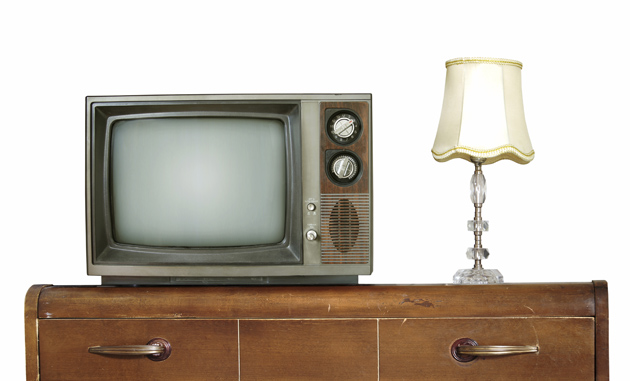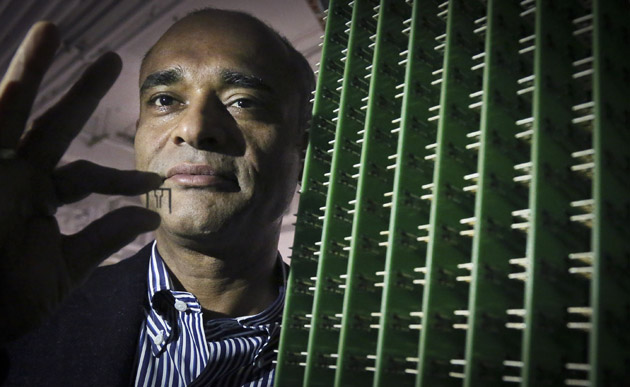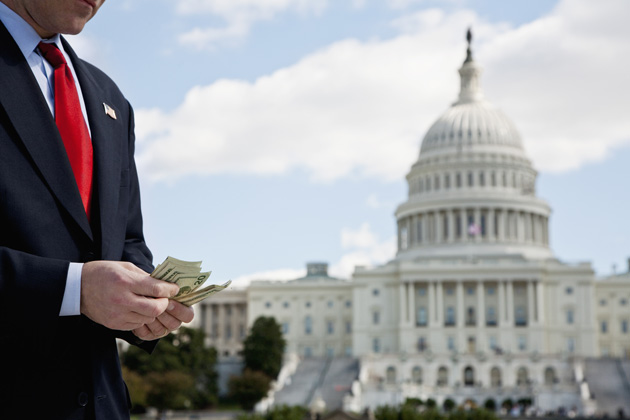
Today, the United States Supreme Court will spend one hour hearing the latest arguments in an old, important debate that affects everyone watching television in the US: who owns the airwaves?
ABC, CBS, NBC, Fox and others use the broadcast frequencies our TV antennas pick up, the government regulates those frequencies, and cable companies pay broadcasters to re-broadcast those frequencies, but the answer to who owns them remains nebulous. That is at the heart of today’s case — “American Broadcasting Companies, Inc., et al. v. Aereo, Inc.” — being decided by the highest court in the United States. And the decision stands to leave a massive impact on how Americans consume television, regardless of which side wins.
WHAT IS IT?

Aereo charges customers $8/month to rent a physical antenna in a remote location that offers local channels and cloud DVR service, which is then streamed live to smartphones, tablets, and computers. Broadcasters and the federal government say that violates copyright law; that re-broadcasting content from the airwaves via the internet is a crime.
The biggest names in broadcast television, from CBS to Disney and the federal government too, have 30 minutes to present their case: that New York City startup Aereo is stealing content and re-broadcasting it without paying a fee. Aereo has the same 30 minutes to defend itself; an attempt to uphold previous rulings in its favor from lower courts. What the Supreme Court decides doesn’t just affect Aereo customers, but the future of television as we know it.
WHY SHOULD I CARE?
The decision leveled by the Supreme Court ultimately affects much more than Aereo. Do you like cloud DVR services? How about competition in the world of broadcast TV? They’re just two potential targets for impact.

First: cloud DVR functionality — once the subject of its own hard-fought legal battle — could be deemed a “public broadcast.” Should the broadcasters group win, services that millions of people use will be suddenly illegal in the eyes of US law. At very least, those services would be up for re-evaluation in terms of legality. The US government doesn’t think so, because cloud DVR services re-broadcast already played content, while Aereo offers streaming of live content with a slight delay.
Second: if what Aereo is doing is illegal, then what hope do we have for innovation in broadcast technology? Over the last half century or so broadcasters and distributors have slowly rolled out technological advancements like HD and surround sound, a pace which looks even slower compared to changes in wireless or internet services.
Even minor tweaks to the existing formula like VCRs, DVRs and internet streaming were slowed or crippled by legal challenges that exist to keep the existing broadcast model afloat. Worse, the broadcasters themselves have been slow to adopt the new technology.

Consider that only one broadcast network (ABC) offers a live stream of its over-the-air broadcasts — and that’s only in select markets, with a pay-TV login. New innovations are being considered as a response to Aereo should it prevail, but if the startup loses, there is little incentive for the existing patchwork of studios, broadcasters and distributors to provide real change in response to customer’s demands.
WHAT’S AT STAKE?

The US public doesn’t “own” the airwaves, but broadcasters are dependent on both the US government for logistical regulation (i.e. who broadcasts on which frequencies) and the US public for ad dollars (viewers equal ad dollars, in broad terms). The signals are open to anyone with a receiver, and at least one of the stations is partially funded by taxpayer dollars (PBS).
The public doesn’t “own” the airwaves, but we do own all the mechanisms that enable companies to profit from their existence. And that’s pretty powerful stuff.
WHAT’S THE ARGUMENT?
When Congress enabled broadcasters to start collecting re-transmission fees from cable companies in 1976, a new cash stream was born. Cable companies began paying broadcasters directly for feeds of their content. That revenue stream now accounts for anywhere from 10 percent of a given broadcast company’s annual revenue to 50 percent, according to both sides of the case. Aereo argues that it can sidestep paying to re-broadcast content by using individual antennas; since it’s receiving thousands of signals, it’s attempting to skirt re-transmission laws.
Here’s what that 1976 copyright law says you can’t do with what’s transmitted over broadcast signals:
1: to perform or display it at a place open to the public or at any place where a substantial number of persons outside of a normal circle of a family and its social acquaintances is gathered; or
2: to transmit or otherwise communicate a performance or display of the work … to the public by means of any device or process, whether the members of the public are capable of receiving the performance or display receive it in the same place or in separate places at the same time or at different times.
By using individual antennas, Aereo isn’t taking one signal and re-transmitting it to thousands of customers; Aereo takes thousands of individual signals and re-transmits them to thousands of people. Broadcasters, who have spent over 30 years reaping financial rewards in re-transmission fees, say Aereo is violating copyright law in “performing” their content (the re-broadcast). One side’s arguing legal technicalities, the other’s arguing technological minutia. All for the future of broadcast television.
WANT EVEN MORE?
The SCOTUS Blog has a great piece diving into the history of broadcast legislation, and the site’s catalogued all of the case filings thus far right here. Longtime television industry executive turned investor Barry Diller, whose company invests in Aereo, wrote an interesting (though certainly biased) op-ed about the case at The Wall Street Journal. Finally, the federal government’s filing is surprisingly readable (for a legal document). We’ll also have updates as the Supreme Court makes its decision in the coming months.
[Image credit: Getty Images/AP Photo, Bebeto Matthews/Getty Images, Brand X]
What do you think will happen after today’s SCOTUS hearing on Aereo?
Filed under: Home Entertainment, Internet, Software, HD
Comments

